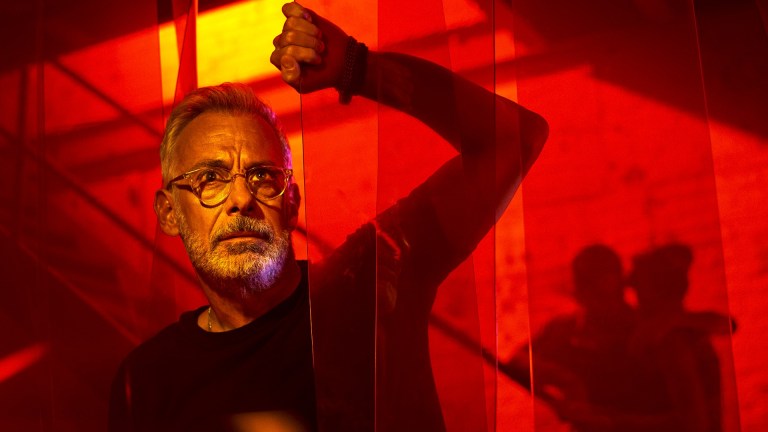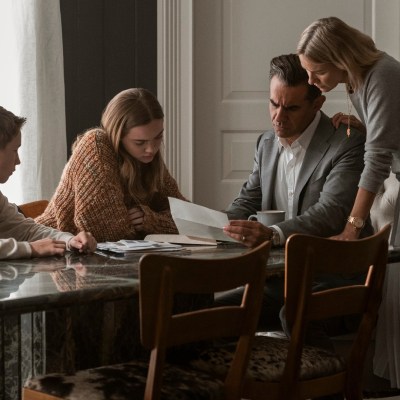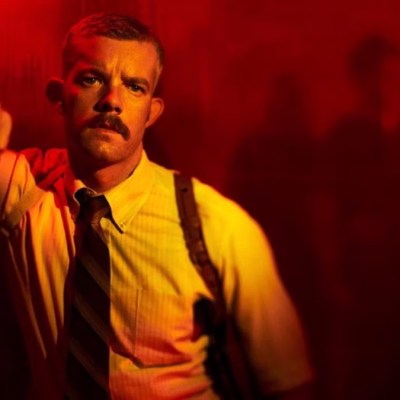American Horror Story: NYC Finale Shows The True Face Of Horror
Death doesn't hide behind a leather mask and carry a knife. The AIDS crisis descends on American Horror Story: NYC.

This American Horror Story: NYC review contains spoilers.
American Horror Story Season 11 Episodes 9 and 10
Since probably the third season of American Horror Story, the show has felt less like a gripping exercise in character-driven horror and more like a grand excess. Ryan Murphy gets all his friends and favorites together, they go off and shoot a crazy thing, and Sarah Paulson gets another chance to shriek at Evan Peters. It’s all very stylistic, gory, and campy, but rarely does it attempt to reach out and touch emotionally. That hasn’t been a thing the show has taken any effort to do since Asylum. Then, AHS: NYC comes along and completely shakes up the American Horror Story formula.
In my review of the first two episodes of the season, I wrote that NYC is nothing like previous seasons of American Horror Story. Gone is the epic weirdness fans have come to know and embrace over the seasons. Gone are the familiar faces: Sarah Paulson, Evan Peters, Jessica Lange, Taissa Farmiga are nowhere to be found. Instead, the show turns to mostly new faces like Russell Tovey and people from other Ryan Murphy projects like Joe Mantello and Charlie Carver, along with relatively new returners like Patty LuPone, Billie Lourd, and Nico Greetham. The only true AHS regulars to make the line-up for the show’s 11th season would be Denis O’Hare and Zachary Quinto, leaving viewers without much in the way of famliar faces from seasons past to glom onto.
By and large, this change from the standard Murphy method works wonders in terms of shaking up the show and getting the audience out of a comfort zone. That seems to be the entire point; the show has enough DNA to be recognized as Amercian Horror Story, but has changed enough to be something fresh and unsettling, even challenging. There’s no giggling while a malevolent villain in his tighty-whiteys is attacked by a murderous clown here. This is a serial killer stalking a marginalized community and the excesses of the 1970’s and 1980’s wiping out an entire generation of people. Hard to chuckle at that.
As such, American Horror Story plays it straight, pardon the pun, and aside from a few diversions into the seamier side of gay life in New York City, focuses on two core mysteries. One, the serial killer stalking the gay community and stealing body parts. Two, the mysterious disease that everyone seems to be getting and no one understands. Of course, with hindsight we know what that disease is, which makes watching what happens in “Requiem 1981/1987” all the more depressing and horrifying. There’s no alien intercession or happy ending, just a lot of dead people wasting away in hospital beds, neglected by doctors and nurses too afraid of contracting the disease to do their jobs properly.
It would take years of struggling, led by real people like fictional Gino Barelli (Joe Mantello), to make any headway in public perception of the disease, and it’s Joe Mantello’s performance that makes NYC work. While Zachary Quinto’s Sam carries forth with the bulk of the show’s ‘evil’ moments, and there’s no question that Sam is a sadist and a terrible person, Gino keeps fighting the good fight throughout his life, pushing back against Sam, his partner Patrick (Russell Tovey), the NYPD, Henry (Denis O’Hare), the mafia, gay culture itself, and pretty much anyone and anything who gets in his way.
There’s no end to the fight in Gino, and his struggle, particularly in the wake of Patrick’s sickness, carries the season with a single-minded determination. Gino takes everything that happens seriously; as a result, the audience takes it seriously too, even when shirtless twinks with antlers show up alongside the Shachath to whisk people away and Big Daddy (the leather-masked serial killer played by Matthew William Bishop) stalks the streets.
No matter how hard Gino fought, no matter how much Sam turned to drugs and partying, no matter how many criminals Patrick arrested, there was never going to be a happy ending. The only moments of peace the characters end up finding are when they accept that they’re broken, when they turn to their personal Big Daddy and embrace it. That’s particularly pushed forward in “Part One,” with Henry getting some great lines in Our Lady J’s script, with J’s direction pushing that narrative sharply as Sam and Patrick go through respective traumas in an attempt to find some closure before they die. Both men seem to find some peace, Patrick especially, as they relive the traumas that turned them into the hedonist and the deceitful police officer, respectively.
“Part Two” really digs into the horrors unleashed on the gay community in the early to mid 80’s, with Jennifer Lynch focusing on the death and desparation all around Gino as he struggles valiantly against the disease slowly eating away at him like the physical personification of his grief over the deaths of Patrick and everyone else in his community. The Kraftwerk montage of Gino facing down all that death, of lines of men in suits walking and falling into an open grave is a thing of terrifying beauty, and if nothing else, AHS: NYC shows that there’s still some ability to shock and scare left in the Murphyverse. It’s one of the strongest montages the show has ever put together, with Big Daddy the physical manifestation not of guilt, but of AIDS itself, cutting a swath through the community with gunfire, broken necks, and knives.
There’s no way to win this fight. It’s already too late for Gino and pretty much everyone he knows. But it’s not in Gino’s nature to quit, and Mantello sells that steely determination perfectly as Gino uses the bully pulpit to get the word out to the community while doing everything possible to carry on. He can’t run from his fate, but he can fight like hell to the bitter end and go down swinging, never willing to quit even to the end. People might try to ignore what’s happening, but Gino refuses to let the powers that be sweep his community, and the failure of the medical establishment, under the rug.
The end result of Amercican Horror Story‘s trip to 80’s New York City isn’t the splattery fun romp that might have been expected, but a serious, dark look at the various ways the gay community has been failed by institutions purporting to protect it. Serious issues treated with seriousness? On a Murphy/Falchuk production? With only a little bit of supernatural shenanigans? With conspiracy theories actively being debunked rather than encouraged? Stranger things have happened, but perhaps this is the booster that American Horror Story needed after a less-than-successful Double Feature.


